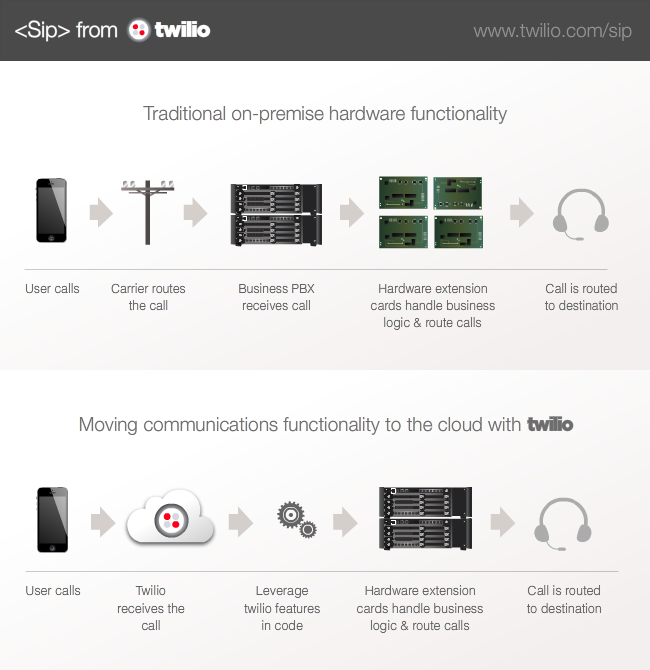Twilio, the cloud-based communications company that lets app and website developers embed calling and messaging features into their work with a bit of API code, is today taking one more step to strengthen its bonds to enterprise users globally: it is launching SIP from Twilio. Introducing SIP, short for Session Initiation Protocol, into Twilio’s portfolio of services will not only give the company more flexibility to target enterprises (who use SIP in their calling systems) more directly, but since it is a protocol also used for services like video, could also be a signal of what services Twilio has planned next.
Today’s launch is the result of a limited beta first launched in October around the time of Twilio’s last developer conference. And unlike Twilio’s other services that rely on carrier interconnects in different countries to work, SIP is all-IP based and therefore available globally.
Initially covering inbound voice calls, with outbound calls coming soon, the move initially gives Twilio two service openings: Twilio can potentially become the bridge between callers and a company’s internet IP-based PBX. It will also allow for, say, a Twilio service on a website to integrate with a company’s wider SIP-based calling system. Both give Twilio a crack at deeper integration into those enterprise phone systems, and give enterprises another way to cut out traditional carriers and their costs out of their operations.
Twilio’s SIP code effectively replaces the role that both a carrier and business PBX have in a company’s phone system, by taking that functionality into the cloud. Twilio’s diagram of how that works is here:

This not only takes away the need for the PBXs, but it makes it easier for enterprises to modify how these calls are routed — with the big disruption here being that the heavy stuff is getting effectively transformed into some lines of code; or as one early user, RealPage’s Joe McCorkle notes, it’s “a highly modern system being updated with simple API web development.”
“SIP enables companies big and small to realize the flexibility of pairing their existing IP technology with the easy to use Twilio communications platform,” Twilio CEO and Co-founder Jeff Lawson said in a statement.
By switching the call to IP, it also takes away the cost of routing it on a traditional PSTN network. Charges for Twilio’s SIP service, the company says, begin at half a cent per minute for the first 500 minutes per month, and discounting from there based on volume.
The introduction comes at an interesting time for VoIP telephony services: Skype, which had also been thought to be considering a close SIP migration at one time, recently parted company with its chief technology strategist, Jonathan Rosenberg, who was considered by some to be one of the “fathers of SIP.” Skype had done very little with SIP beyond Skype Connect functionality, and it appears that it will not be doing any more going forward, with that sort of functionality appearing instead in Microsoft’s Lync suite. In the meantime, SIP is used extensively in enterprise systems, as well as the main protocol in some consumer-focused services like Google Voice and Vonage.
“We think of what we’re doing with SIP as less as a response to Skype,” Thomas Schiavone, director of product management at Twilio, in an interview. “They always faced challenges approaching the developer ecosystem. This is more response to market demand. It opens up another endpoint for us.”
Indeed, he says that the company’s move to offering SIP was a long time coming, considering that developers — there are some 175,000 in all on Twilio’s platform today — have been “clamoring” for SIP integration for the last three years.
Schiavone says that outbound SIP calls should be coming “in the next quarters,” but that the inbound had been the most-requested feature so far, and Twilio estimates that it will account for some 80% of the use cases.
